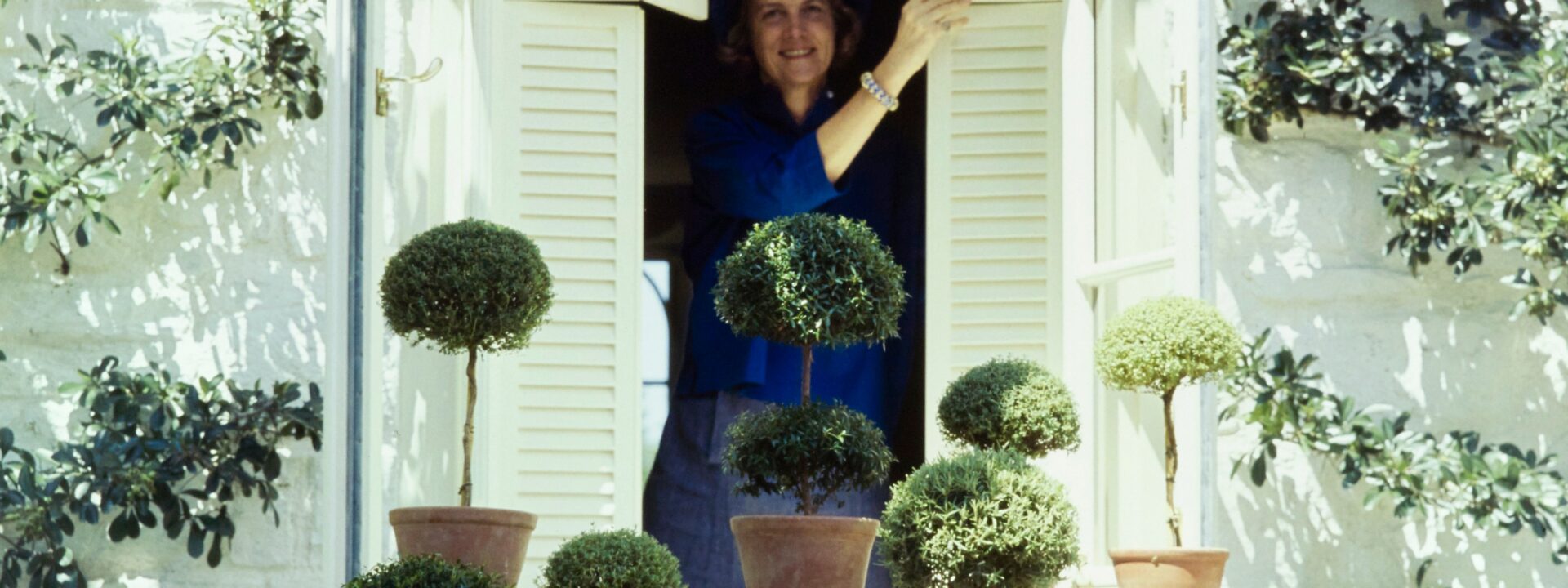“Green Flowers and Herb Trees,” by Bunny Mellon, first appeared in the December 1965 issue of Vogue.
For more highlights from Vogue’s archives, subscribe to our Nostalgia newsletter here.
A garden should not be overexplained. Its true essence lies not in reality but in its perpetual state of becoming—a blend of past and future. Like a library, a garden is a collection of distinct wonders and mysteries, among them green flowers and herbs shaped into miniature trees.
Green flowers are magical, almost witchlike, casting an illusion of reflected sunlight, like the glow in a Bonnard painting. Their hues range from emerald to the pale green of moonlight on white petals. When mingled with more conventional blooms, they lend an air of vitality and mystery.
Some flowers are naturally green: Ixia viridiflora, the delicate Platyclinis filiformis orchid, the Cymbidium miretta ‘Glendessary’ (ancestor of all green orchids), and the lacy Alchemilla major (lady’s-mantle), beloved in England but underappreciated here. Others surprise us—like green zinnias, which once appeared unexpectedly among their vividly colored kin. A watchful gardener nurtures such accidents, protecting and isolating the seeds. The tulip ‘Artist,’ nicotiana ‘Lime,’ lilies like ‘Green Dragon’ and the Green Magic strain, and green auriculas (once prized in 18th-century collections) all emerged from such experiments.
With the help of our gardener, Charles Pecora, and a greenhouse, we enjoy green flowers year-round. We never use them exclusively in bouquets or beds—they enhance other colors, deepening and brightening them with quiet radiance. Their mystery is like true love, trying to hide but betrayed by its own joy.
Gardening demands foresight—planning at least eighteen months ahead. It is an act of creation, care, and hope. Years ago, I began shaping rosemary, thyme, myrtle, and santolina into small standards, resembling bay trees, ranging from ten inches to three feet tall. At the time, they were unique in America, though I’d read of similar forms in old gardening books.
The green flowers shown here—zinnia ‘Envy,’ nicotiana ‘Lime,’ and Alchemilla major—were gathered from the gardens of Paul and Bunny Mellon in Upperville, Virginia. Mrs. Mellon, who wrote this article, is one of America’s finest gardeners, quietly shaping some of the country’s most enchanting landscapes.
These herb trees, evoking the simplicity of medieval monastery gardens, began as an experiment to create something for our culture akin to Japan’s bonsai—living plants with the presence of sculpted objects. Each takes about two years to shape, and over time, we’ve cultivated a small forest. The original myrtle cuttings came from Mount Vernon, where head gardener Robert B. Fisher continues George Washington’s tradition of sharing plants. As the trees mature, I give them to friends. A single crushed leaf of rosemary, thyme, or santolina can fill a room with the scent of a country garden.Friends who cook keep their trees in the kitchen, where trimming the branches adds flavor to the stew.
The delicate green zinnia, ‘Envy.’
Even after many years, these trees remain a wonder and a delight. Each one starts so improbably—just a fragile thread of a plant tied to a thin bamboo stake. Watching them grow demands everything a gardener has to give—patience, faith, resilience, and the ability to weather both success and disappointment, much like a sailor at sea.


